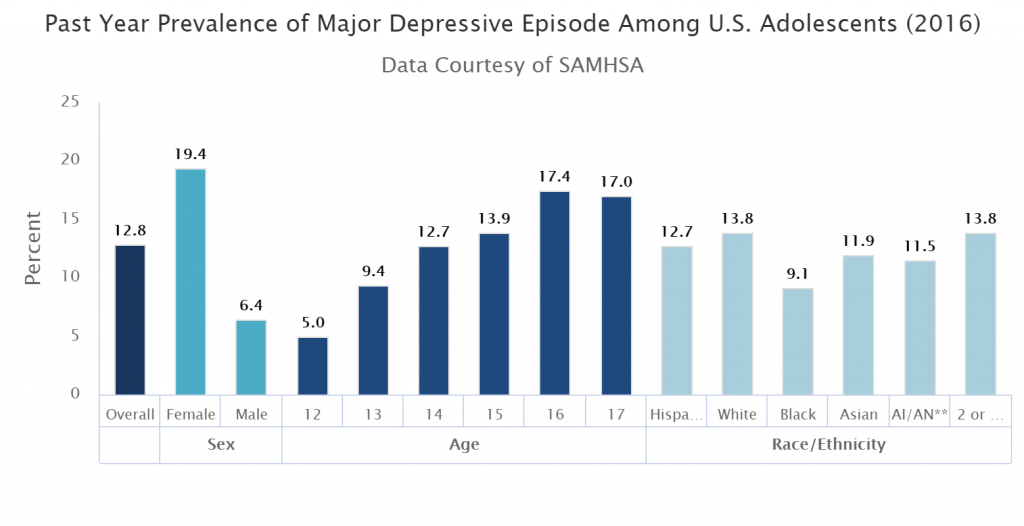Analytics can help hospitals in many important ways—even in life-saving capacities. There are few use cases as compelling as when analytics can be used to create an intervention that can literally save a life.
Tweet: 3 ways analytics can help with adolescent mental health
Such is the case with adolescent mental health. Organizations are currently using analytics to track measures and patient care, monitor medication usage, and screen for symptoms of depression. Here’s how.
The severity of the problem
The statistics are alarming: both adolescent depression and suicides are increasing at a staggering rate. The latest numbers show an estimated 3.1 million adolescents in the U.S. – or 12.8% of the U.S. adolescent population—had at least one major depressive episode (MDE) in the last year. (See chart below for a breakdown by sex, age, and race/ethnicity.) An MDE is classified as a period of two or more weeks during which there is a depressed mood or loss of interest, plus four other symptoms, including loss of sleep, eating, energy, concentration, self-image, or recurrent thoughts of death or suicide. That number is up 87% from 2005.

Source: National Institute of Mental Health
In addition, the rate of adolescent suicide is rising. Every year, more than 5,700 young people ages 15 to 24 kill themselves. The suicide rate for that age group is currently 30% more than it was in 2000. The number of children and adolescents admitted to the hospital for suicidal thoughts has doubled over the last decade.
How analytics can help
Analytics can help hospitals better manage adolescent health in a multitude of ways. Here are three specific ways organizations can use it.
Track measures
Hospitals need to ensure these patients are getting the best care possible and are being seen regularly. Using a robust analytics solution, organizations can pull in EHR data and track various measures related to mental health and patients’ progress.
- Are patients being monitored on a regular basis?
- Are they making their office visits?
- Are they taking their medications?
Monitoring medications
One of the big risks of putting adolescents on medication is the risk of major side effects. That’s why monitoring drug utilization is especially critical with this population. Analytics can track the number of medications, the duration of use, and the side effects.
Depression screening
In addition, analytics can be used to collect data gathered during healthcare organizations’ depression screening processes. This way, hospital administration can analyze if there are certain departments that tend to have a higher rate of depressed patients. Users can also dive into data to see if there are certain characteristics that are common to certain groups of depressed patients. Additionally, analytics can be used to identify trends and outcomes to determine if the screenings are effective or not.
Learn more
To learn more about how healthcare organizations are using analytics for adolescent mental health, as well as other challenges in the pediatric population, download our ebook, “10 Challenges for Children’s Hospitals and How Analytics Built on Data Trust Can Help Solve Them.”
- Solving Hospital CEOs’ Pressing Challenges With Analytics - April 15, 2024
- Navigating the Wellness Wave: Wine & Spirits Data Strategy - April 9, 2024
- Takeaways from HIMSS24 - March 26, 2024




